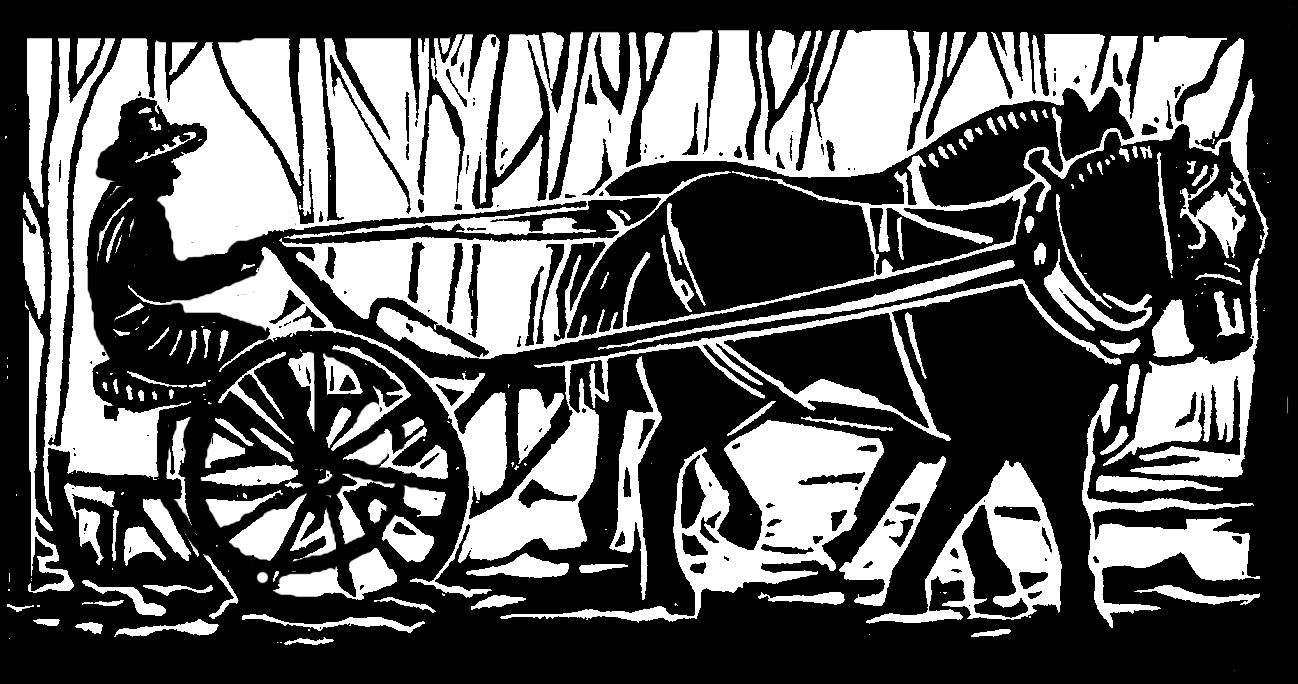My fellow farmer and I like vegetables better than we like numbers. We rely heavily on our fingers, our chalk, and our calculators when it comes to all the counting we need to do on our vegetable farm.
The counting starts right away, with the spring sowing. How many cabbage seeds should we sow in order to put out transplants at 16 inch spacing to fit a 3 foot wide, 200 foot long bed? This would be an easy calculation, one would think, except that the bed is really only more or less 3 feet wide and more or less 200 feet long, depending on the workhorses and the teamster and the lay of the land.
Then, of course, we always plant a few extra seeds of each crop, just in case some don't germinate. Occasionally all the seeds sprout, including the extra ones, and then we have too many plants. But we can't bear to throw any nice cabbage starts in the compost, so we try to fit all of them in the more or less 200 foot bed, which means the spacing is down to 12 inches by the end of the row, or it might mean that we put some cabbage in the next more or less 200 foot bed, which was meant for kale and chard, say, at 12 inch spacing, in staggered double rows in the bed. Then some of the kale and chard might get pushed over, too, into the broccoli, and then what? And where we will find the 20 feet for the dill that we usually tuck in at the end of a more or less bed?
We farmers look at each other, and the garden beds, numbers whirling in our heads.
Once we get the plants in the ground, we have a little rest from these difficult calculations. But it is not long before harvesting begins, and we take up the numbers again. From June through November, every Tuesday and Friday, we calculate and recalculate. Some things are easy: for example, on a June harvest day we have 17 members coming, so we pick 17 heads of bok choy, along with the other crops that are ready. But things get more tricky: one day in early July we have 64 tomatoes for 24 members, but some tomatoes are small and some are large. Then we have to make some decisions indeed.
How do we make the CSA shares as equitable as possible? Some variety in size is desirable, since one person might like a nice little head of cabbage, and another person might like a nice big head of cabbage. But when it comes to tomatoes, there are not many people who would pick a nice little tomato over a nice big one. Thus we sort our tomatoes into big and little, which further complicates our numbers.
Then, suppose, late in August, that we have 29 members coming to pick up vegetables on a Tuesday afternoon, and we have 152 cucumbers, 131 yellow squash, and 78 zucchini. This is when the calculator, or a grade schooler who needs to practice her multiplication and division during the summer months, comes in handy. We end up with 5 cucumbers, 4 yellow squash, and 2 zucchini per share. But what to do with the remaining?
Well, we make up a choice tray, where CSA members can pick either one more zucchini or one more yellow squash, and then we farmers will make a batch of pickles with the rest of cucumbers. Except that we are just finishing up harvesting the first planting of cucumbers and starting the second one, and the second planting cucumbers look beautiful and the first planting cucumbers are in funny shapes, so the counting farmer takes several funny-shaped cucumbers out of the crate to put in the surplus and sharing tray, except she forgets that she has done this in the fever of trying to count way too many vegetables at once, and we end up short of cucumbers by the end of the day, so that our pickling cucumbers turn back into CSA cucumbers. Ah, well. At least there are plenty of cucumbers.
And now, in September, we have the counting challenge of slowly moving from summerish crops to fallish crops. Of course, there are still lots of tomatoes and yellow squash, but now the onions are coming in, and soon we will be digging potatoes, and picking winter squash. We will need to count and balance those too. But all of this figuring is nothing when we compare it to the figuring that has to happen in the farm budget. Now there are some difficult jugglings and jigglings and wigglings and wagglings. As I say, we two farmers like vegetables, much more than we like numbers.
Originally published in the Monadnock Shopper News, Sept 26 - Oct 2, 2018
